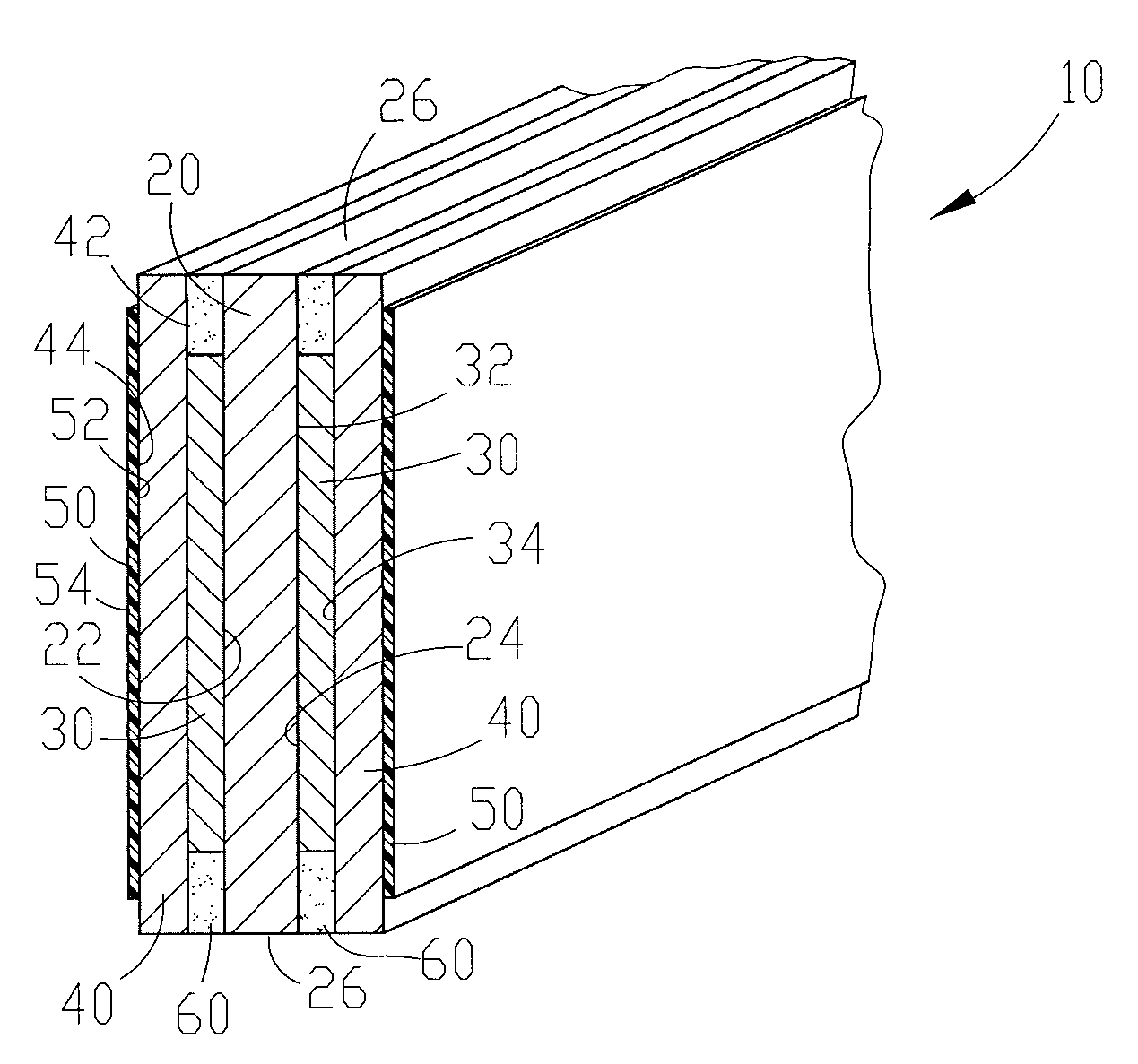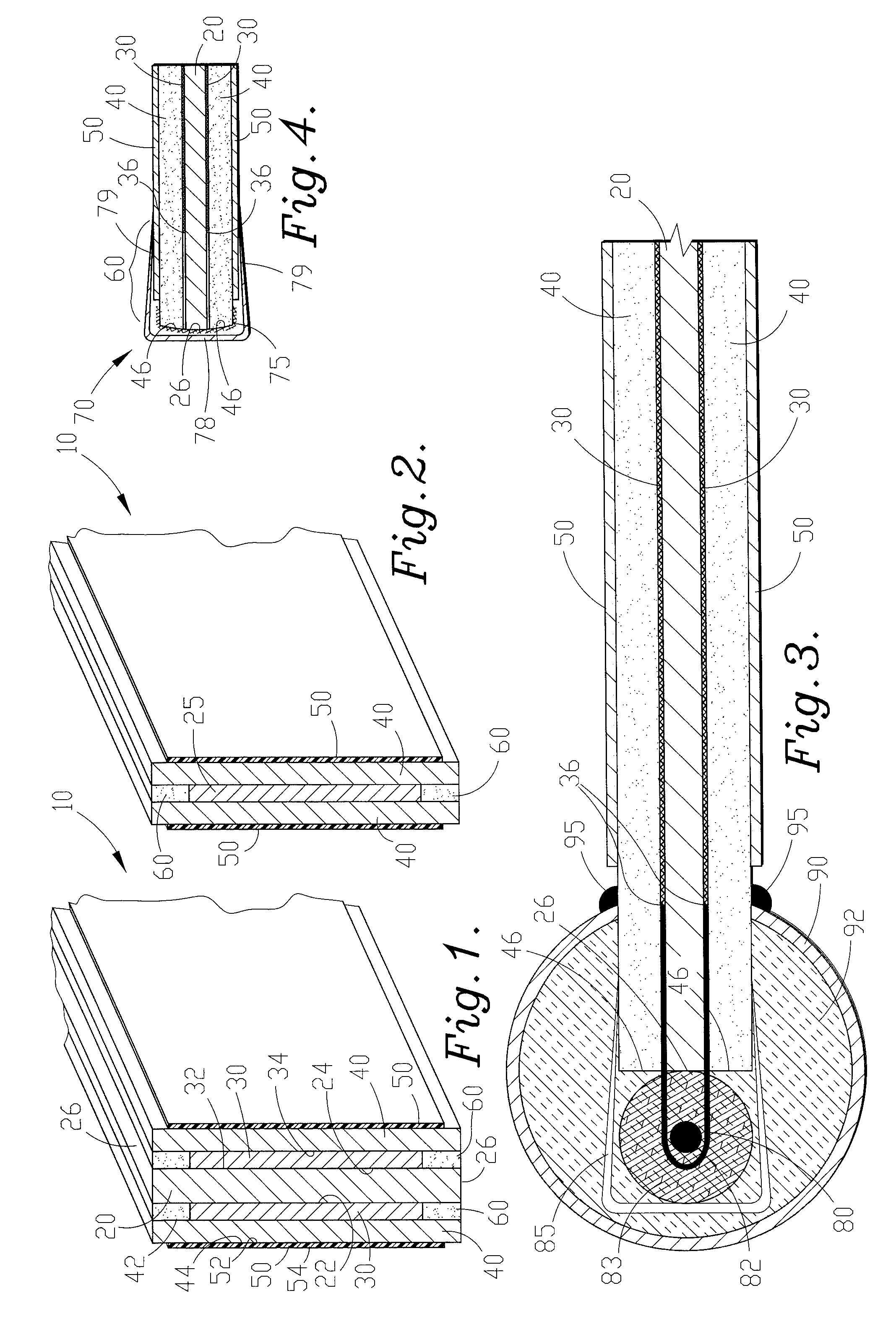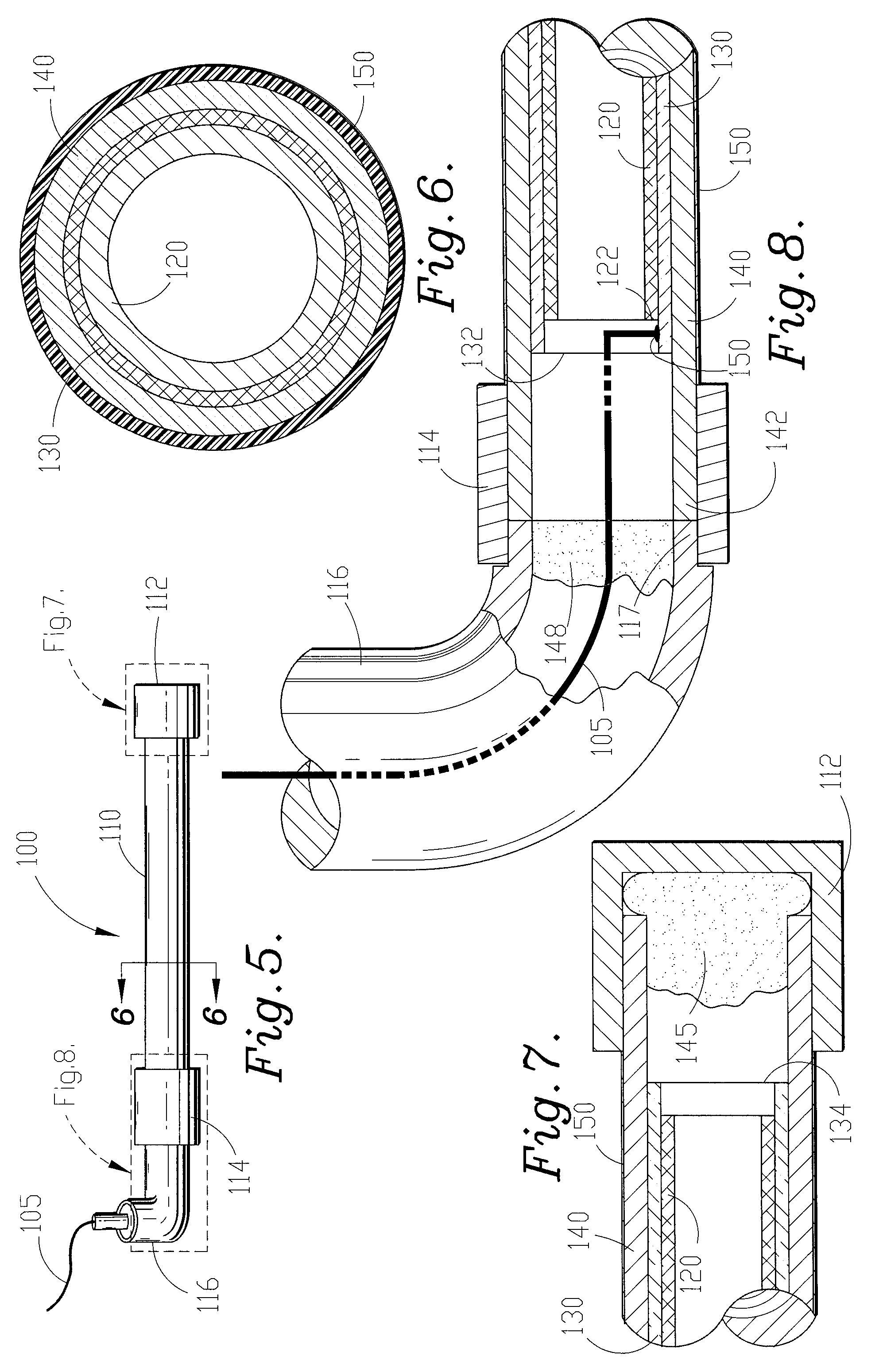Electrostatic fluid treatment apparatus and method
a technology of electrostatic fluid and treatment apparatus, which is applied in the direction of peptides, liquid/fluent solid measurement, and the nature of treatment water, etc., can solve the problems of reducing fluid flow, loss of heat transfer capability, and adverse effects on the operation of the system, so as to reduce installation costs, increase efficiency, and reduce fluid flow. , the effect of good toughness and durability
- Summary
- Abstract
- Description
- Claims
- Application Information
AI Technical Summary
Benefits of technology
Problems solved by technology
Method used
Image
Examples
Embodiment Construction
[0040] Preferred embodiments of the present invention are hereinafter described with reference to the accompanying drawings.
[0041] Referring to FIG. 12 a perspective view of a preferred embodiment of the multi-layered electrode of the instant invention in the form of a plate. The plate electrode shown in the instant invention has been designed to have a generally flat shape. Nevertheless other shapes, such as a curved shape can be utilized to provide a more uniform electric field or to optimize fluid flow characteristics (i.e. increase dwell time and / or decrease back-pressure) of the plate for use in numerous possible applications.
[0042]FIGS. 1 & 2 show two alternative embodiments of the construction of the flat plate electrode shown in FIG. 12. In FIGS. 1 & 2, portions of isolation frame 70 (discussed below with respect to FIG. 4) have been excluded for clarity. FIGS. 1 & 2 are cross-sectional views of the flat plate electrode of FIG. 12 taken along cross-section line 1-1. In FIG...
PUM
| Property | Measurement | Unit |
|---|---|---|
| voltage | aaaaa | aaaaa |
| voltage | aaaaa | aaaaa |
| voltages | aaaaa | aaaaa |
Abstract
Description
Claims
Application Information
 Login to View More
Login to View More - R&D
- Intellectual Property
- Life Sciences
- Materials
- Tech Scout
- Unparalleled Data Quality
- Higher Quality Content
- 60% Fewer Hallucinations
Browse by: Latest US Patents, China's latest patents, Technical Efficacy Thesaurus, Application Domain, Technology Topic, Popular Technical Reports.
© 2025 PatSnap. All rights reserved.Legal|Privacy policy|Modern Slavery Act Transparency Statement|Sitemap|About US| Contact US: help@patsnap.com



